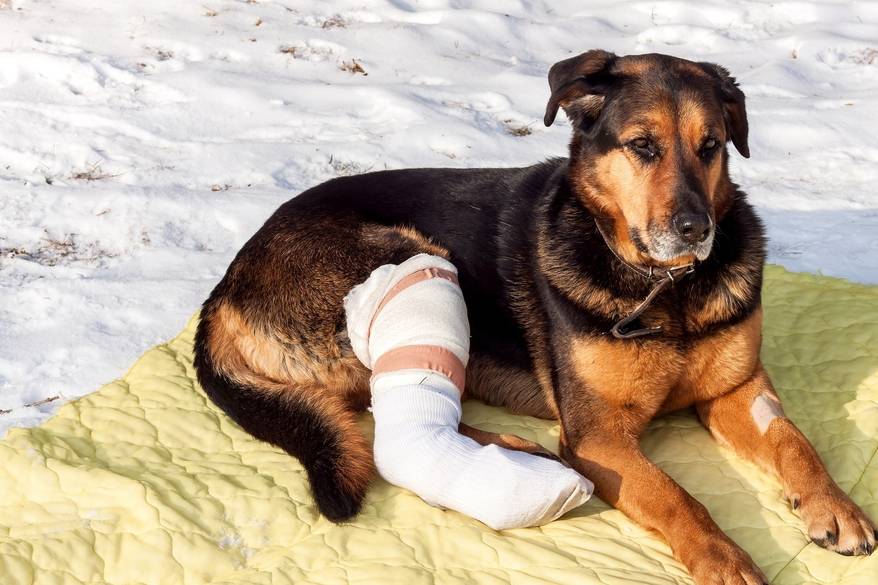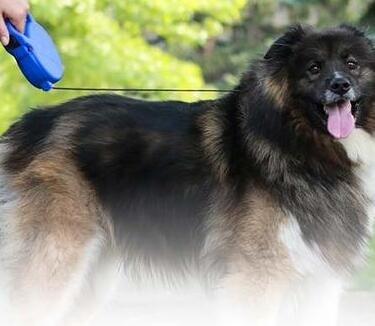
-
Find the right food for your petTake this quiz to see which food may be the best for your furry friend.Find the right food for your petTake this quiz to see which food may be the best for your furry friend.Featured products
 Puppy Lamb Meal & Brown Rice Recipe
Puppy Lamb Meal & Brown Rice RecipeVital nutrients to support 5 essential building blocks for lifelong health
Shop Now Hill's Science Diet Adult 7+ Senior Vitality Small & Mini Chicken & Rice Recipe Dog Food
Hill's Science Diet Adult 7+ Senior Vitality Small & Mini Chicken & Rice Recipe Dog FoodImproves everyday ability to get up & go
Shop Now Puppy Large Breed Chicken & Brown Rice Recipe
Puppy Large Breed Chicken & Brown Rice RecipeVital nutrients to support 5 essential building blocks for lifelong health
Shop NowFeatured products Adult 7+ Chicken Recipe Cat Food
Adult 7+ Chicken Recipe Cat FoodSupports energy level and beautiful fur in mature cats
Shop Now Adult Sensitive Stomach & Skin Cat Food
Adult Sensitive Stomach & Skin Cat FoodHighly digestible food that is gentle on the stomach. Nourishes skin & promotes lustrous fur.
Shop Now Adult Indoor Chicken Recipe Cat Food
Adult Indoor Chicken Recipe Cat FoodSupports energy level and beautiful fur in indoor cats
Shop Now -
Dog
- Dog Tips & Articles
-
Health Category
- Weight
- Food & Environmental Sensitivities
- Urinary
- Digestive
- Joint
- Kidney
-
Life Stage
- Puppy Nutrition
- Adult Nutrition
Cat- Cat Tips & Articles
-
Health Category
- Weight
- Skin & Food Sensitivities
- Urinary
- Digestive
- Kidney
-
Life Stage
- Adult Nutrition
Featured articles The Incredible Science Behind Your Pet's Microbiome
The Incredible Science Behind Your Pet's MicrobiomeLearn what a pet's microbiome is, how it contributes to your pet's gut & overall health, and why nutrition is important in maintaining healthy microbiomes.
Read More Water
WaterDiscover why water is the most important nutrient for your dog or cat to live a healthy life. Find out how much water your pet should consume each day.
Read More Pet Food Storage Tips
Pet Food Storage TipsDiscover how and where to store your dry, as well as canned, dog and cat food. Learn how to find the "best before" dates on all Hill's pet food packaging.
Read More -


It's upsetting to see your dog in pain. Limping, whining, yelping and other signs that your dog is hurting will make you want to take steps to comfort him and help his pain right then and there. But if his leg is broken, trying to examine or treat his injury on your own could only make things worse. A veterinarian can better determine the seriousness of the injury and determine whether the broken leg requires treatment.
Dog Broken Leg Symptoms
Dog leg injuries are easy to identify if your dog is either limping or refusing to walk altogether. But these signs alone don't necessarily indicate a broken leg. According to VCA Hospitals, other signs that your dog's leg might be broken include intense pain, swelling at the site of the fracture, and the leg lying at an awkward angle. If your dog is willing to walk, he won't put any weight on a leg that's broken, but will instead carry it above the ground. If you suspect your dog might have a broken leg or another serious injury, it's best to get him to a vet right away rather than attempting to examine or treat the injury yourself.
Transporting Your Injured Dog
Transporting your pooch to the vet can be tricky, though. If not done properly, you can exacerbate the injury or worsen your dog's pain. If your dog is small enough, carry him carefully to your car, supporting his head and hips. If you have a larger dog who is able to walk on his non-injured legs, help him balance as he walks to the car, where you'll need to carefully help him climb into it. If your large dog is unable to walk, you and a helper can lay him on a blanket and carry him in it like a sling. Once the dog is in the car, lay him on his non-injured side. Once you reach the vet, let them know you have an injured dog in the car and they can help you get him inside.
Remember that when injured, dogs can get scared or be sensitive to the pain. This may cause them to act in ways that they are not prone to like snapping at you or yelping when you go near the injured area. Keep in mind that he is in pain and doesn't mean it. If he is particularly aggressive, you may need to ask for assistance in restraining him, and possibly putting a muzzle over his nose temporarily. Just continue to use a soothing voice and reassure him he'll be okay. Once he is in recovery, he will hopefully go back to being his old self again. If not, and his aggravated behavior continues after healing, it is a good idea to talk to your veterinarian to see if there are any other underlying health issues that need to be addressed.
Dog Broken Leg Treatment
According to Healthy Paws Pet Insurance, your vet will likely want to take an X-ray of the injured leg to confirm that it's broken and determine the best course of treatment. Your dog might also be given an NSAID—a nonsteroidal anti-inflammatory drug—to help with his pain. It is important to not try and alleviate your dog's pain on your own, as many over the counter pain medicines for humans are not good for dogs. When you call your veterinarian to let them know you are bringing in your dog, you can ask them if there is anything you can do to help with his pain until you get there. If the leg is indeed broken, your vet will discuss with you whether it's better to simply set the leg and put it in a cast or a splint, or whether surgically repairing the leg with pins or a plate might be the better option. Several factors go into determining the best course of treating a broken leg, including the type and placement of the fracture, and the age of the dog, which can impact bone strength.


Tasty Tips
Preparing for Injuries

While there isn't a lot of practical dog first aid you can apply to a broken bone, there are a few steps you can take to prepare for such an emergency:
Post the numbers of your regular vet and an after-hours emergency vet clinic where you can find them quickly.
Keep a muzzle on hand. Even the most loving dogs sometimes tend to bite when in pain.
If your dog is too big to carry or if you don't own a vehicle, know who you can ask for help with transporting him.
Carry pet insurance, which can help cover the cost of treatment for a broken leg.
If you suspect your dog has a broken leg, it's important to stay calm. If you panic, you'll cause your dog to be anxious and afraid on top of being in pain. The faster his injury can be examined and assessed by a vet, the better your dog's chances of healing will be.
Caring for Your Dog During Healing Process
After your veterinarian has had a chance to assess the issue with your dog and determine if the leg is indeed broken he or she will give you instructions on how to care for your dog to help him heal. This will likely include managing veterinarian prescribed pain medication and how to properly administer it for your dog. They will also give you instructions on to keep your dog from exacerbating the injury by walking on it. Make sure to follow their instructions to the letter, to help your dog heal as quickly as possible. If you have to leave your dog at home for any lengthy period of time (going to work for instance), you will want to keep him kenneled or in a room small enough for him to be comfortable, but not get up and walk around. Your vet might also recommend putting a cone on him to keep him from biting at the cast or stitches after the procedure.
He will need your help going outside to go to the bathroom, so you might have to carry him out to do his business. He will also not be able to exercise like he normally does, so weight gain can happen while in recovery. Your vet might recommend a special prescription dog food made for injury recovering dogs that is better suited for his temporary sedentary life. Your vet might also just recommend you feed him less to avoid excess weight gain, which can put even more pressure on the injured leg. While you will be tempted to give your dog lots of treats while he is in pain, just remember that he is not able to burn off those extra calories like he used to be. You might also begin to undo previous training by rewarding him for nothing, so try to only give treats when he does normal good-boy behaviors like doing his business.
Then, as the healing process sets in and your dog starts to feel better, the cast and stitches can be removed, but it is still important to make sure your dog takes it slow. Follow any instructions your veterinarian gives you regarding walks and play. You want to avoid reinjuring the leg. Overtime, you will start to be able to tell your dog is feeling like his old self again as his mood will change. When your vet finally gives the okay, you'll want to start exercising him again to try and burn off any excess weight he might have gained in his down time.
A broken leg is never fun for anyone, and it can be just as hard on you to see your baby in pain as it is for him. Just remember to follow the advice of your veterinarian and continue to give him constant love and you both will make it through the process with an even stronger bond.


Jean Marie Bauhaus is a pet parent, pet blogger, and novelist from Tulsa, Oklahoma, where she usually writes under the supervision of a lapful of fur babies.
Related products

Vital nutrients to support 5 essential building blocks for lifelong health

Vital nutrients to support 5 essential building blocks for lifelong health

Improves Everyday Ability to Get Up & Go

Improves everyday ability to get up & go
Related articles

Learn how to stop your dog from begging at the dinner table, and understand how it can help contribute to his health.

Learn basic steps & precautions for treating a cut on your dog, including what you can put on the cut, and when you should take them to the vet.

Understand the role that Omega-6 and Omega-3 fatty acids play in your dog's overall health, and how you can ensure they are getting enough.

Discover fun and engaging games and other ways to help your dog exercise, keeping him happy and healthy.

Put your dog on a diet without them knowing
Our low calorie formula helps you control your dog's weight. It's packed with high-quality protein for building lean muscles, and made with purposeful ingredients for a flavorful, nutritious meal. Clinically proven antioxidants, Vitamin C+E, help promote a healthy immune system.
Put your dog on a diet without them knowing
Our low calorie formula helps you control your dog's weight. It's packed with high-quality protein for building lean muscles, and made with purposeful ingredients for a flavorful, nutritious meal. Clinically proven antioxidants, Vitamin C+E, help promote a healthy immune system.

